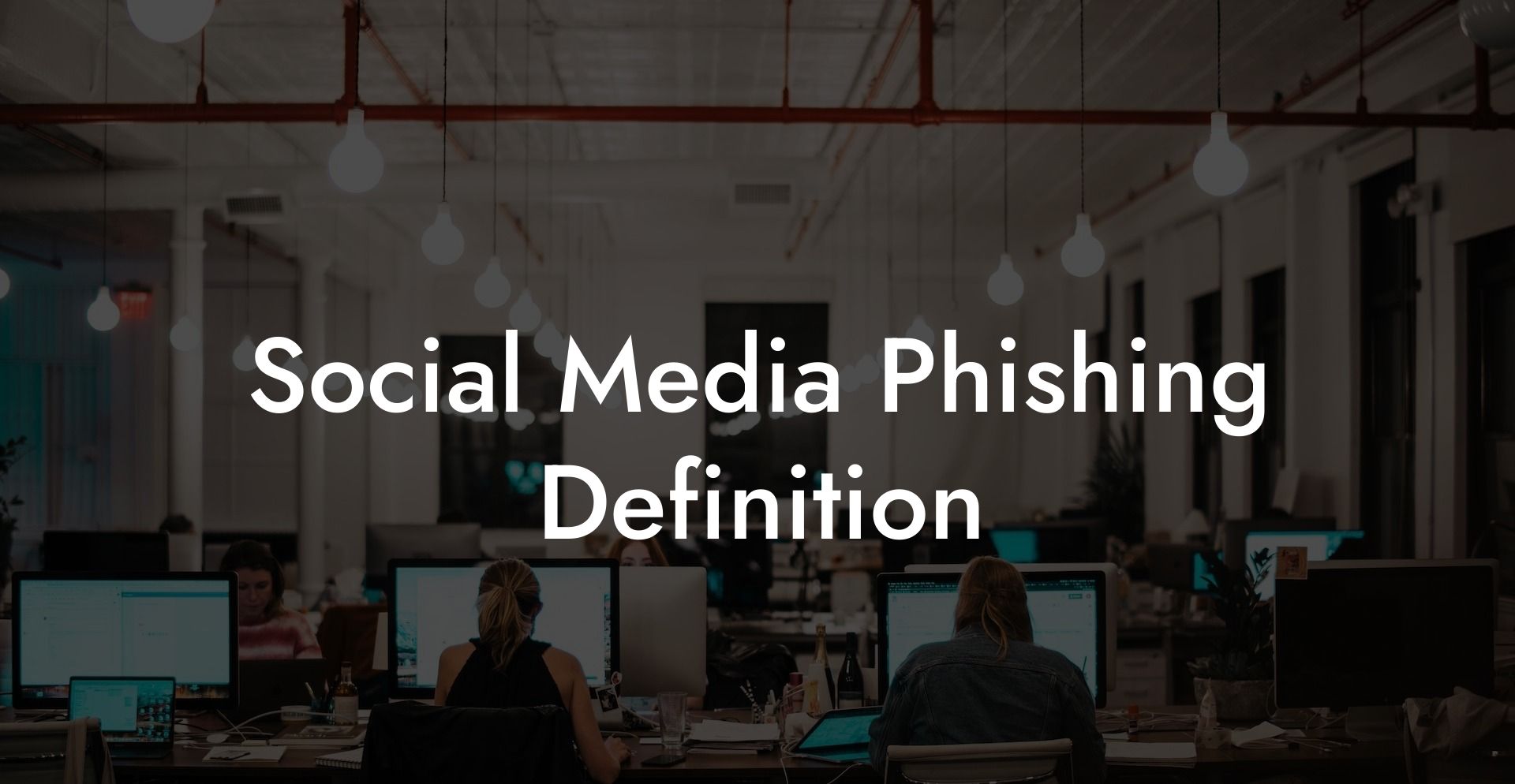In the ever-evolving world of online communication, social media has become an integral part of our daily lives. These platforms enhance our connectivity, but they also expose us to various cyber threats. One of the most common cyberattacks when using social media is social media phishing. In this comprehensive guide to social media phishing, we delve into its meaning, discuss common tactics used by cybercriminals, and provide practical tips to keep you safe from such scams.
Social Media Phishing Definition Table of Contents
Defining Social Media Phishing
Common Tactics Employed by Cybercriminals
Imagine this: You receive a direct message from a friend on your favorite social media platform. They share an exciting contest with you, urging you to click on the link and enter now to win fantastic prizes. Eagerly, you follow the instructions, only to discover later that the whole thing was a sham. Your account has been compromised, and your personal information stolen. This is an example of social media phishing, and unfortunately, such incidents are on the rise.
Defining Social Media Phishing
Protect Your Data Today With a Secure Password Manager. Our Top Password Managers:
Social media phishing refers to the malicious use of social networking sites to steal sensitive information, such as login credentials, credit card details, or other personal data. Cybercriminals often pose as trustworthy sources or individuals, using deceptive tactics to trick users into clicking on fraudulent links or revealing confidential information.
Common Tactics Employed by Cybercriminals
1. Impersonating real individuals or companies: In this scheme, attackers create fake accounts resembling real people or businesses. They then send messages or posts containing links to fraudulent websites, urging users to click on them. Once clicked, the user may be prompted to enter sensitive information or download malicious software.
Example: A phishing attempt on LinkedIn was observed where cybercriminals impersonated a well-known software company and sent out messages containing links to fake job listings. The victims, thinking they were applying for a legitimate job, inadvertently disclosed their login credentials.
2. Taking advantage of trending topics and current events: By exploiting current news stories or popular trends, phishers lure users into engaging with seemingly genuine content. The underlying links or attachments can instead lead to phishing sites or malware downloads.
Example: During the COVID-19 pandemic, several cases of social media phishing scams surfaced, where cybercriminals impersonated health organizations and provided fraudulent links supposedly containing vital information about the virus or vaccine registration.
3. Social engineering techniques: In some cases, attackers use psychological tactics to manipulate victims, such as appealing to emotions like fear, curiosity, or excitement. This way, they can encourage people to take rash actions, like clicking on harmful links, completing bogus surveys, or disclosing personal information.
Example: Facebook Messenger was targeted by scammers who posed as friends in need of financial help. The message invoked a sense of urgency and empathy, luring victims into providing their credit card information for alleged debt relief or charity donations.
Safeguarding Yourself Against Social Media Phishing
1. Exercise caution with links and requests: Be wary of unsolicited messages or posts containing links, even if they appear to be from familiar sources. Verify the authenticity of the sender before clicking on any links or engaging with them.
2. Enable two-factor authentication (2FA): Adding an extra layer of security through 2FA makes it harder for phishers to gain unauthorized access to your accounts.
3. Regularly update your software: Make sure your browser, operating system, and antivirus software are always up-to-date with the latest security patches.
4. Educate yourself and others: Stay informed about the latest social media phishing tactics and share this knowledge with your friends and family. This collective awareness can help prevent many potential victims from falling prey to such scams.
Stay Vigilant and Share the Knowledge
Social media phishing poses a significant risk to our online security, but with the right precautions, you can protect yourself from falling victim to these cyberattacks. Remember, the more we know about the tactics used by cybercriminals, the better we can defend ourselves and others against them. So, spread the word about social media phishing and our comprehensive guide on this topic to help others stay safe online. Be sure to explore our other guides on Voice Phishing for even more insights and protection tips.
Protect Your Data Today With a Secure Password Manager. Our Top Password Managers:















